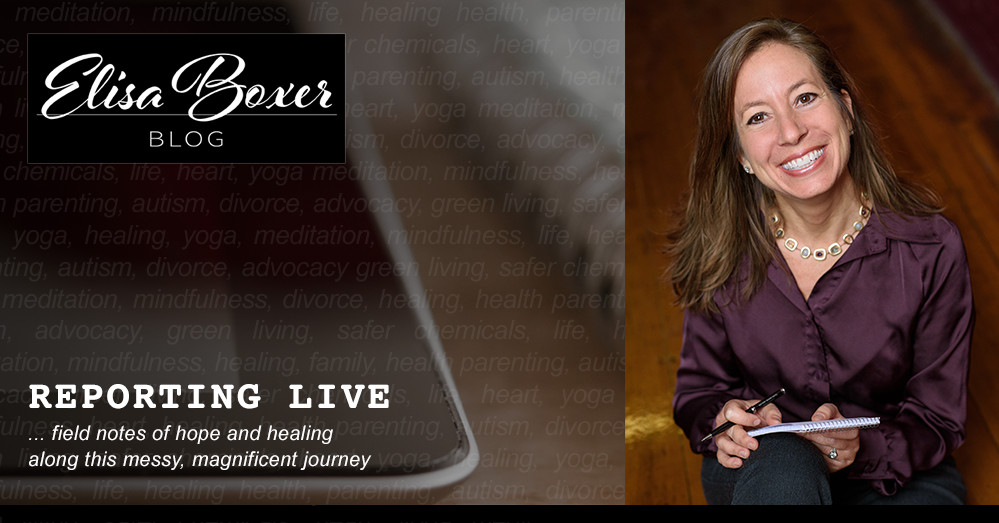This post originally appeared on
Here in Maine, the tour buses packed with leaf peepers have left the roadways, and our fall foliage has gone from bright to brown. In mindfulness circles, nature offers a mirror for different seasons of personal development and, like the late-autumn leaves, this one’s all about letting go.
Frustrated with a controlling coworker and wishing you could release that anger? Embarrassed by the presentation you just botched and trying to shake it off? Sad about an argument with a family member, but telling yourself to just move on?
Not so fast.
While releasing what’s weighing you down is a good goal in theory, mindfulness–and science–say your physical and mental health are better served by letting negative emotions in, rather than letting them go.
Let me explain what that means.
Science says feel it to heal it.
It seems counterintuitive. Especially in this age of optimism and positive psychology, who wants to purposely feel annoyed, resentful or depressed?
But studies show that experiencing negative emotions and letting them run their natural course can improve happiness, health, productivity and well-being. Accepting uncomfortable feelings can, paradoxically, help us handle stress and make us feel more satisfied with our lives.
On the other hand, studies show that compartmentalizing negative emotions or pushing them away can raise your blood pressure and increase your risk of disease.
Researchers at the University of Toronto and the University of California at Berkeley who studied the benefits of experiencing negative emotions found that suppressing uncomfortable feelings can actually backfire, leading to more of the unpleasant emotion you’re trying to avoid.
Do you ever “should” yourself? As in, telling yourself you should feel this way, or shouldn’t feel that way? Yeah, me too. The researchers call those self-imposed judgments “negative meta emotional reactions” and say they make bad feelings worse.
So what should you do instead?
Pinpoint the physical location.
Thankfully, you have the perfect tool for experiencing difficult feelings in a healthy way, so they can transform on their own.
When you feel an unpleasant emotion, rather than resisting it or ruminating on it, pinpoint its exact physical location.
I do this by simply asking myself: “Where is this showing up in my body?”
Researchers have found that emotions actually do show up as physical symptoms. A few common examples: Grief can feel like a weight on your chest; frustration can cause you to clench your jaw; anger can manifest as a fiery feeling in your head; sadness can cause your shoulders to hunch.
By zeroing in on the physical location of your emotion, you’re taking your mind out of the equation. Rather than letting your head run away with a thought, you’re allowing your body to experience a feeling. And feelings help show us who we are.
Is your heart racing? Does your breathing feel constricted? Do you feel like you’ve been punched in the gut?
Get curious about the specific physical sensation, and then tell yourself what you’re experiencing. “My anger is showing up as a pounding heart,” for example, or “My disappointment is making my stomach feel deflated.”
That’s it. That’s all you need to do, whenever an unpleasant emotion arises. Name it, locate it, and feel it.
Resist the urge to resist.
Mindfulness is about allowing the full range of human experiences, without judging those experiences as good or bad.
So while you may be tempted to show these tough emotions the door, try giving them a seat at the table instead. Treat them with compassion when they arrive.
An over-thinker by nature, I’ve been a pro at resisting uncomfortable feelings; trying to get rid of them too soon.
Recently I tried letting them in. A new client called, demanding to discuss our project during her dinnertime commute. Rather than scheduling a time that worked for both of us, I stayed on the phone for the full hour, noticing a lump in my throat growing along with my frustration.
My body was telling me I wasn’t speaking my truth.
Working from home, I struggle with drawing lines. That throat lump reminded me to speak up and set limits.
Since then, I’ve tried to create better boundaries around defining my work hours. Interestingly, once I began showing that I value my time, clients reflected that back by showing a greater respect for it as well.
Your triggers can become your teachers, pinpointing areas where you’re personally and professionally ready to grow. Feeling that uncomfortable emotion of frustration as a physical sensation helped highlight an area where I was stuck.
I learned recently that oak leaves sometimes stay on the branches, turning brown and holding snow to ensure the trees get plenty of water come spring.
The leaves let go on their own time, when they’re ready, after giving the trees what they need to thrive.

